GrabCAD

Intricate Flower Centerpiece
by GrabCAD
Last crawled date: 1 year, 11 months ago
This model is a piece of functional art, designed with the goal of conveying that with the advent of 3D printing the possibilities are endless. If you imagine it, you can build it (depending on your CAD skills, as I quickly found out). All surfaces have been detailed/lofted/twisted to emphasise this point. This piece would be extremely complex/impossible to manufacture using traditional methods.
Originally, the dahlia and zinnia flowers (fig.6) inspired this design. Being an engineer, I wanted to make this art piece also functional. 3D printing allowed me to do that. The outer flower shape is split into eight parts, which move inwards with gears (fig.4, 5) to form an enclosure. The model has two functions: a candle stand and a jewellery box.
The candleholder (fig.1) replaces the central shaft piece to allow a tea light to be placed in the centre of the model. The area above the candle is clear and the walls are a sufficient distance away from flame so that heat should not be an issue. The zinnia flower symbolises remembrance and lasting affection. When the candle is placed inside the flower it projects heart shaped shadows (fig.2), symbolising the love between a person and their absent friends.
The central shaft has a tray and hooks that allow it to hold various pieces of jewellery (fig.7). The dahlia flower symbolises a lasting bond between two people, making this an especially meaningful jewellery box for items that were received as a gift from someone special.
Ideally, this design would be SLS/SLA printed, as this would better capture the intricate surface details on some parts (fig.8), however FDM using ABSplus can also be used. The item is under no major stress so the material choice is not critical. Different colour combinations are possible (fig.3). Care has been taken to ensure that the model follows recommended design guidelines concerning minimum wall thickness, fillets, etc. The design printability has been proven by using Formlabs Pre-form software (fig.9). Parts may be printed separately, or combined together with gaps between components. This may reduce printing time. Four of each of the parts Flower_L and Flower_R are required.
Name: Daniel Fahy
Institution: University of Oxford
Originally, the dahlia and zinnia flowers (fig.6) inspired this design. Being an engineer, I wanted to make this art piece also functional. 3D printing allowed me to do that. The outer flower shape is split into eight parts, which move inwards with gears (fig.4, 5) to form an enclosure. The model has two functions: a candle stand and a jewellery box.
The candleholder (fig.1) replaces the central shaft piece to allow a tea light to be placed in the centre of the model. The area above the candle is clear and the walls are a sufficient distance away from flame so that heat should not be an issue. The zinnia flower symbolises remembrance and lasting affection. When the candle is placed inside the flower it projects heart shaped shadows (fig.2), symbolising the love between a person and their absent friends.
The central shaft has a tray and hooks that allow it to hold various pieces of jewellery (fig.7). The dahlia flower symbolises a lasting bond between two people, making this an especially meaningful jewellery box for items that were received as a gift from someone special.
Ideally, this design would be SLS/SLA printed, as this would better capture the intricate surface details on some parts (fig.8), however FDM using ABSplus can also be used. The item is under no major stress so the material choice is not critical. Different colour combinations are possible (fig.3). Care has been taken to ensure that the model follows recommended design guidelines concerning minimum wall thickness, fillets, etc. The design printability has been proven by using Formlabs Pre-form software (fig.9). Parts may be printed separately, or combined together with gaps between components. This may reduce printing time. Four of each of the parts Flower_L and Flower_R are required.
Name: Daniel Fahy
Institution: University of Oxford
Similar models
thingiverse
free

Candle Holder by mraiser
...ep. plastic prints of these types of items should only be used as props or to make a cast for a not-so-highly-flammable material!
free3d
$10

Dahlia flowers (HP)
...dahlia flowers (hp)
free3d
all the polygons and vertices are for 2 flowers combined.
thingiverse
free

Marvel Crisis Protocol Carrying Tray by ir0nbeard
...his should allow for transportation of models, widgets, cards, and tokens to be transported easily between tables when at events.
grabcad
free

Expanding Globe
... significant stresses on the structure, therefore a fea study is not needed.
name: daniel fahy
institution: university of oxford
cg_trader
$3

CANDEL STAND | 3D
...older. both of these parts will press fit after printing and can be used for your desk, piano candle set or for the dinner table.
thingiverse
free

Replicator2 Minifig by thoromyr
...is not very strong and the legs are a little loose. the legs also do not yet have holes to allow interoperation with lego pieces.
grabcad
free

Oldham Coupling
.... the assembly can be further modified, analyzed, or integrated into larger assemblies to meet specific engineering requirements.
cg_trader
$5

flower Dahlia stl file | 3D
...a stl file | 3d
cg trader
a dahlia flower stl for you to work with. fower dahlia zbrush pendant design jewelry jewellry pendants
3dwarehouse
free

Clipa’m Table lamp
...ore all the different combinations. materials and finishes black textured ral 9005, white textured ral 9002, cotonet y terracota.
thingiverse
free

Open RC Truggy All Metal Diffs
...8.0.0.3a994c4dlwaach
metal front/rear diff:
https://www.aliexpress.com/item/32747540218.html?spm=a2g0s.8937460.0.0.7b102e0exvpwdn
Centerpiece
design_connected
$18
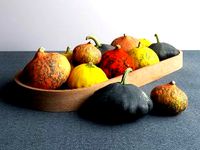
Pumpkin Centerpiece
...pumpkin centerpiece
designconnected
pumpkin centerpiece computer generated 3d model.
turbosquid
$100

Lotus Centerpiece
...
royalty free 3d model lotus centerpiece for download as 3dm on turbosquid: 3d models for games, architecture, videos. (1665018)
turbosquid
$4

garden centerpiece.
...royalty free 3d model garden centerpiece. for download as obj on turbosquid: 3d models for games, architecture, videos. (1348511)
design_connected
$25

Spring Pansy Centerpiece
...spring pansy centerpiece
designconnected
spring pansy centerpiece computer generated 3d model.
design_connected
$10

DOMINIQUE PIERRAT Centerpiece
...dominique pierrat centerpiece
designconnected
dominique pierrat centerpiece computer generated 3d model.
turbosquid
free

Candles centerpiece
... available on turbo squid, the world's leading provider of digital 3d models for visualization, films, television, and games.
design_connected
$27
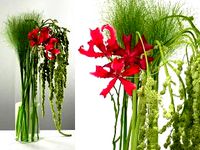
Amaranthus & Nerine Centerpiece
...amaranthus & nerine centerpiece
designconnected
amaranthus & nerine centerpiece computer generated 3d model.
turbosquid
$32

Elegant Stairs & Centerpiece
...3d model elegant stairs & centerpiece for download as skp on turbosquid: 3d models for games, architecture, videos. (1305152)
turbosquid
$15

Halloween candle centerpiece
... available on turbo squid, the world's leading provider of digital 3d models for visualization, films, television, and games.
turbosquid
$12

Table Centerpiece Decoration
... available on turbo squid, the world's leading provider of digital 3d models for visualization, films, television, and games.
Intricate
turbosquid
$5

Intricate-looking handle
... available on turbo squid, the world's leading provider of digital 3d models for visualization, films, television, and games.
3d_export
$5

Intricate Wine Glass 3D Model
...wine glass 3d model
3dexport
glass wine intricate flute champagne
intricate wine glass 3d model brookstar231093962 55829 3dexport
3d_ocean
$5

Intricate Carved Wooden Panel
...d from photographs. texture, displacement, normal, occlusion and specular jpg maps are all included in this download! displace...
3d_export
$24
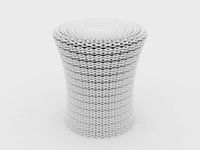
Mesh Table Stool 3D Model
...mesh table stool 3d model 3dexport stool table intricate mesh lattice rope mesh table stool 3d model 3dformdesign...
3d_ocean
$12

Heart
...detail emotion floating floral forged glossy heart hearts icon intricate jewelery jewelry light love metal model realistic red relations...
3ddd
$1

Табурет
...used by bamileke tribal chieftains. our rendition features an intricate hand-carved...
3d_ocean
$9

Stripes Fabric 369
...stripes fabric 369 3docean cloth colors detailed fabric intricate italy striped general this is striped fabric texture pack...
3d_ocean
$7

Wicker Basket
...wicker basket 3docean basket bowl detailed french high detail intricate rattan realistic weaven wicker wood wooden general this is...
3d_export
$12
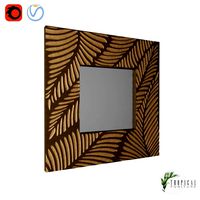
freeport square mirror
...freeport square mirror 3dexport the square mirror features an intricate carved palm frond motif. to create a distinctive look,...
3d_ocean
$15
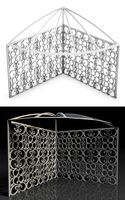
Screen Corner
...screen corner 3docean classic corner delicate elegant garden gazebo intricate outdoors park screen scrollwork structure wrough iron a beautiful...
Flower
archibase_planet
free

Flowers
...flowers
archibase planet
flowers flower plant
flowers n280214 - 3d model (*.3ds) for exterior 3d visualization.
archibase_planet
free

Flowers
...flowers
archibase planet
flowers flower plant
flowers n180114 - 3d model (*.gsm+*.3ds) for interior 3d visualization.
3d_export
$6
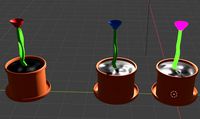
flowers
...flowers
3dexport
flowers
3d_export
$5

flower
...flower
3dexport
flower
3d_export
free

Flowers
...flowers
3dexport
flowers
archibase_planet
free
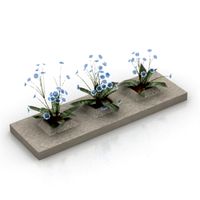
Flowers
...flowers
archibase planet
flowers flower plant
flowers n110314 - 3d model (*.gsm+*.3ds+*.max) for exterior 3d visualization.
archibase_planet
free
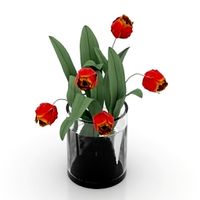
Flowers
...flowers
archibase planet
flowers tulips flower tulip
flowers tulips n180314 - 3d model (*.3ds) for interior 3d visualization.
archibase_planet
free
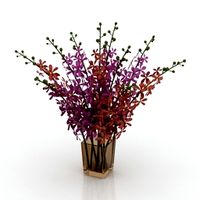
Flowers
...wers
archibase planet
flowers vase vase with flowers
flowers vase n200215 - 3d model (*.gsm+*.3ds) for interior 3d visualization.
3d_export
$7
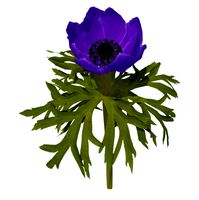
Flower
...flower
3dexport
various flowers
3ddd
$1

flower
...flower
3ddd
цветы
flower
